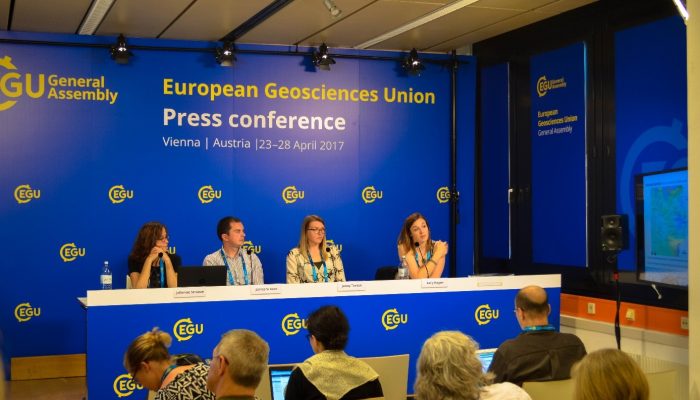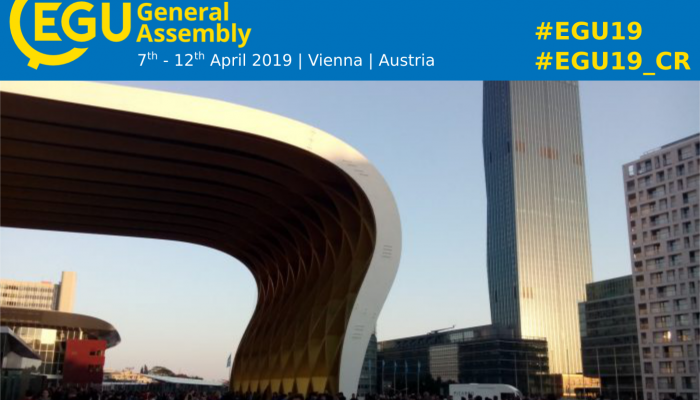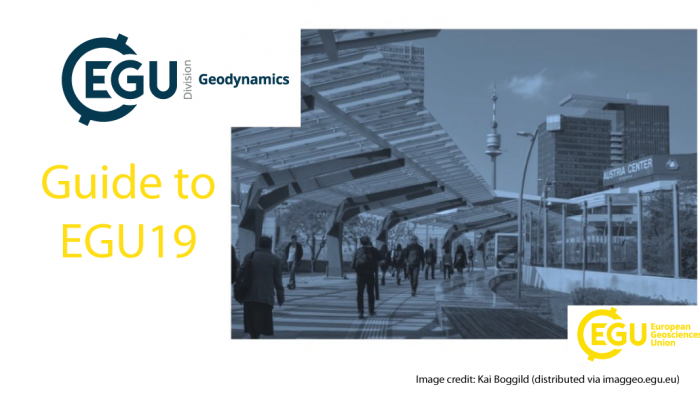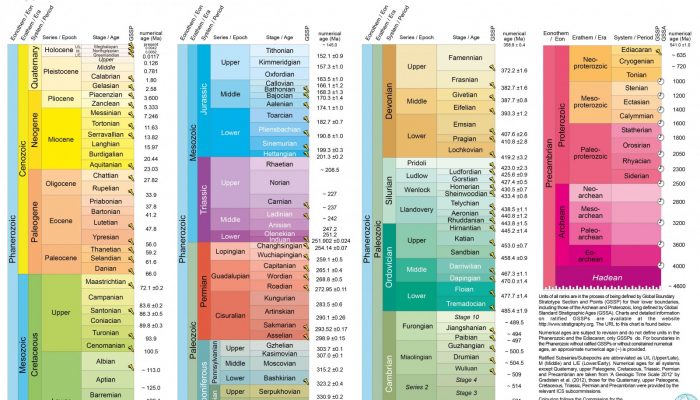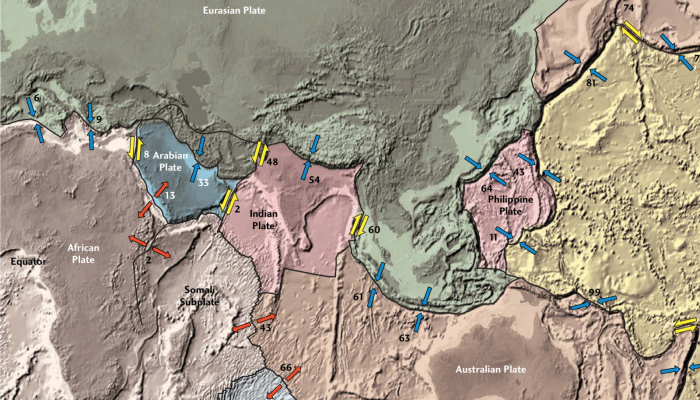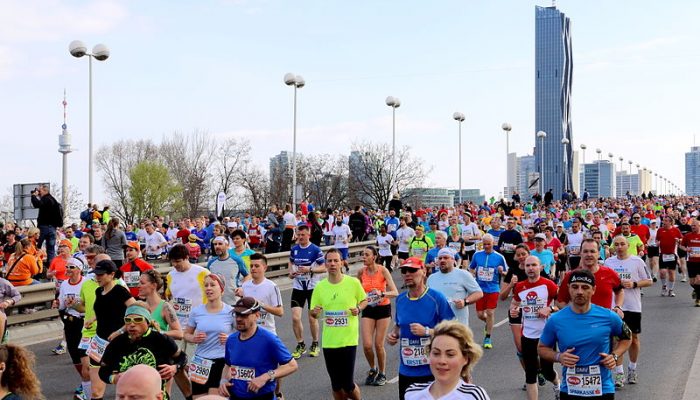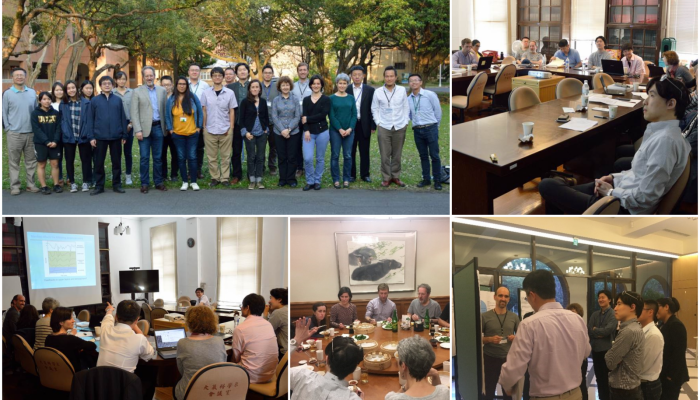Earlier this month we shared a post on how you can keep up to date with all the science being presented at the General Assembly via our social media channels. This week we share with you how you can tune into the conference action, live! Many of the EGU General Assembly highlights will be streamed live, so if you can’t make it to Vienna this year, you can still watch sessions like the Union Sympos ...[Read More]
If you didn't find what you was looking for try searching again.
WaterUnderground
Dowsing for interesting water science – what’s exciting at EGU 2019?
Joint post by Sam Zipper (an EGU first-timer) and Anne Van Loon (an EGU veteran). Every April, the European Geophysical Union (EGU) holds an annual meeting in Vienna. With thousands of presentations spread out over a full week, it can feel like you’re surrounded by a deluge of water-related options – particularly since the conference center is on an island! To help narrow down the schedule! ...[Read More]
Cryospheric Sciences
A brief guide to Navigating EGU 2019!
Are you going to the EGU General Assembly in Vienna next week? If so, read on for a quick guide to navigating the week: Where to start, what to see and how to meet people and enjoy yourself! After all, the meeting is as much about the opportunities to meet scientists from all over the world as it is about the science itself. How on Earth do I know what is going on?! The EGU General Assembly (GA) i ...[Read More]
GeoLog
Blogs and social media at EGU 2019 – tune in to the conference action
With hundreds of oral presentations, PICO sessions and poster presentations taking place each day, it can be difficult to keep up with everything that is on offer during the General Assembly. As well as finding highlights of interesting conference papers, lectures and workshops in the daily newsletter at the General Assembly, EGU Today, you can also keep up to date with all the conference activiti ...[Read More]
Geodynamics
GD Guide to EGU19
With this year’s EGU General Assembly (GA; #EGU19) looming in less than a week, it’s time for all attendees to finish (or start) their own scientific contributions, create their own personal programs as well as plan other activities during the conference. In this blog Nico Schliffke (GD ECS Rep) would like to share some useful advice how to successfully navigate through the conference and hi ...[Read More]
Seismology
2019 General Assembly is getting closer!
The 2019 General Assembly is getting closer! Before letting you go back to polish that glorious figure for your presentation, we wanted to make sure you have all the information about Early Career Scientists (ECS) and seismology-related events.
Geology for Global Development
Anthropocene: Are we in the recent age of man?
Regular GfGD Blog contributor Heather Britton pen’s this weeks post, where she discusses the heated topic of whether we are, or not, living in the Anthropocene. [Editor’s note: This post reflects Heather’s personal opinion. This opinions may not reflect official policy positions of Geology for Global Development.] Naming a geological epoch the Anthropocene, literally meaning R ...[Read More]
Tectonics and Structural Geology
Meeting Plate Tectonics – Dietmar Müller
These blogposts present interviews with outstanding scientists that bloomed and shape the theory that revolutionised Earth Sciences — Plate Tectonics. Get to know them, learn from their experience, discover the pieces of advice they share and find out where the newest challenges lie! Meeting Dietmar Müller Dietmar Müller is Professor of Geophysics at the University in Sydney and leads the EarthByt ...[Read More]
GeoLog
Geoscientist meet-up before the Vienna City Marathon
The EGU General Assembly, officially starting on Sunday 7 April, will bring together around 14,000 attendees to Vienna, but it won’t be the biggest meet-up in the city that day. This year, not only are we expecting Earth, space and planetary scientists to descend on the city for EGU 2019, but also more than 40,000 people will participate in the Vienna City Marathon on Sunday morning. Are you a Gen ...[Read More]
WaterUnderground
Have you ever wondered if groundwater is connected to climate?
Post by Tom Gleeson, Assistant Professor in Civil Engineering at the University of Victoria. ‘Groundwater-surface water interactions’ has become standard hydrologic lexicon and a perennial favorite session title at various conferences… but how often do you hear the phrase ‘groundwater-climate interactions’? A group of hydrologists, hydrogeologists, atmospheric scientists and geodesists that met i ...[Read More]

